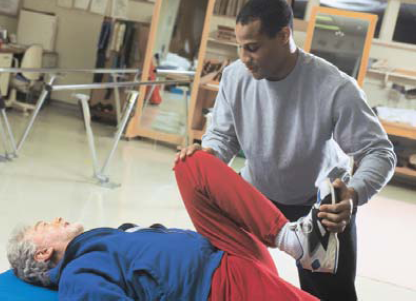
Kneecap, or patella, pain is common, whether a person is athletic or sedentary. Although there are many causes of this condition, an important treatment is Kneecap, or patella, pain is common, whether a person is athletic or sedentary. Although there are many causes of this condition, an important treatment is knee taping, also called “McConnell taping” after Jenny McConnell, an Australian physical therapist who found that the procedure improved kneecap alignment while reducing pain.
Abnormal alignment may indicate that tight tissues on the outside of the thigh are pulling the kneecap toward the outside of the knee, in which case taping may help to realign the kneecap and prevent the pain that occurs during movement and exercise. Knee taping does not just relieve pain, but it also
• offers immediate relief;
• can easily be taught to the patient; and
• facilitates more efficient exercise.
Before knee taping, we first perform “tracking,” which involves your bending and straightening the knee while we assess the patella’s position and function. To observe your pain response, you may also be asked to squat or walk. A white protective tape is applied first to the knee to ensure a strong surface, followed by an adhesive brown tape. Skin irritation that may result from the tape application can be treated easily with a topical hydrocortisone cream.
Typically, the kneecap is taped each day for a period of 2 weeks. Then, taping is done every other day or only for sports and exercise activities. In this way, taping provides pain relief but prevents patient reliance on the technique.
While taping does have many benefits, it is a temporary solution to prevent knee pain and stabilize the kneecap. Taping must be used with exercises we can design that strengthen the muscles and tendons that stabilize the knee. This multifaceted approach will ensure that you regain maximum mobility, along with successful pain relief.









